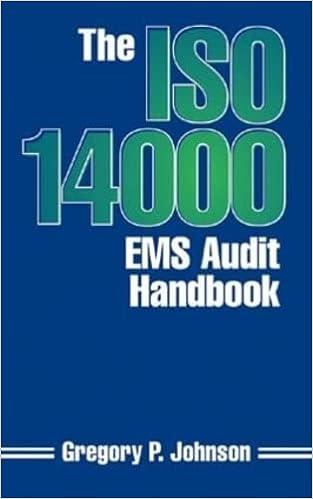Question
Chapters 6, 7, and 10: Application of Interest Concepts to Notes, Bonds, and Leases The problems below involve application of interest concepts to various liability-related
Chapters 6, 7, and 10: Application of Interest Concepts to Notes, Bonds, and Leases The problems below involve application of interest concepts to various liability-related scenarios.
RequiredProvide the information requested in each problem along with supporting calculations.
1. Corp1 issued $250,000 of 3-year bonds with 5% interest payable semiannually at a time when the market rate of interest was 6%. How much did the company receive in issuance proceeds?
2. Corp2 issued $500,000 of 4-year bonds with 6% interest payable semiannually at a time when the market rate of interest was 8%. What is the total amount of interest expense the company will have reported for these bonds over their 4-year life? NoteAnswer this question without creating an amortization schedule.
3. Corp3 issued $750,000 of 5-year bonds with 7% interest payable semiannually at a time when the market rate of interest was 10%. What will be the bonds carrying value after the company makes its 7th interest payment? NoteAnswer this question without creating an amortization schedule.
4. Corp4 bought machinery by paying $20,000 down and signing a $30,000 note requiring three end-of-year payments to the seller of $10,000 each beginning one year from today. If the loan reflects 3% interest, what should the company record as the cost of the machine?
5. Corp5 bought machinery by paying $20,000 down and signing a $30,000 non-interest-bearing note due in full three years from today. If the loan reflects 3% interest, what should the company record as the cost of the machine?
6. Corp6 sold used machinery with an original cost of $99,000 and accumulated depreciation of $46,000, receiving $20,000 from the buyer and the buyers $30,000 note requiring three end-of-year payments of $10,000 each beginning one year from today. If the loan reflects 3% interest, what amount of gain or loss should the company record on the machines disposal?
7. Corp7 sold used machinery with an original cost of $99,000 and accumulated depreciation of $53,000, receiving $20,000 from the buyer and the buyers non-interest-bearing note due in full three years from today. If the loan reflects 3% interest, what amount of gain or loss should the company record on the machines disposal?
8. Corp8 manufactures office copiers and printers. Its best seller is a machine that costs $5,000 to build and can be sold for $7,500. The company has made the machine available for commercial lease under a standard two-year agreement calling for beginning-of-the year payments reflecting the companys desired rate of return of 8%. What is the amount of the rental payment the company requires?
9. Corp9 manufactures office copiers and printers. Its best seller is a machine that costs $5,000 to build and can be sold for $7,500. The company has made the machine available for commercial lease under a standard two-year agreement calling for end-of-the year payments reflecting the companys desired rate of return of 8%. What is the amount of the rental payment the company requires?
10. Corp10 is buying custom-built machinery with a contract purchase price of $943,420. The manufacturer has offered the company a payment plan that would require five annual beginning-of-year payments of $200,000 each. a. If the company accepts the offer, what will be the total amount of interest expense it will incur over the five-year life of the loan? b. If the company can buy the machinery outright by obtaining outside financing elsewhere at 2%, should it do or should it accept the manufacturers offer instead? Explain briefly?
Step by Step Solution
There are 3 Steps involved in it
Step: 1

Get Instant Access to Expert-Tailored Solutions
See step-by-step solutions with expert insights and AI powered tools for academic success
Step: 2

Step: 3

Ace Your Homework with AI
Get the answers you need in no time with our AI-driven, step-by-step assistance
Get Started


